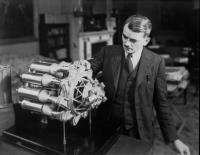 Add My Company
Add My Company
Sign In

West Yorkshire Steel has a strong respect for engineering and innovation, along with a soft spot for forward thinkers and mavericks! History is littered examples of those ahead of their time, but while the names of Einstein and Turing have been appreciated for their vision, it’s possible you’re unfamiliar with Sir Frank Whittle, despite potentially relying on his invention.
Advanced thinking
While we think of jet engines as thoroughly modern, in truth they were conceptualised in the 1920s by the aforementioned Mr Whittle. Frank Whittle started as a RAF Aircraft Apprentice and then studied engineering at Cambridge University, earning a First. Having studied aircraft engine theory, he realised it was possible to build significantly faster planes by moving away from piston-based engines, and he took his ideas to the British Government in 1929.
The theory behind the new engines meant a massive and fundamental shift in thinking – and this was potentially why the importance wasn’t immediately grasped by the Government and the plans were rejected. Without investment, development wasn’t possible and the patents expired just a few years later.
Power Jets
Frank Whittle had some devoted friends and his former colleagues and servicemen acted as fundraisers on his behalf, allowing him to set up Power Jets Ltd in 1936. The development of the engine faced the usual barriers, with some sceptical of the concept, but he slowly convinced fellow engineers and created enthusiastic advocates.
Within the space of a few short years, Frank Whittle’s team had made huge leaps from concept to execution, but by this time, the German government – or Reichsluftfahrtministerium – was also funding research by Wagner and von Ohain. The UK’s Aeronautical Research Committee was also funding research, but into an alternative design than Power Jets Ltd’s work.
For more information on Have you heard of Jet Man, Sir Frank Whittle? talk to West Yorkshire Steel Co Ltd
Enquire Now
List your company on FindTheNeedle.

